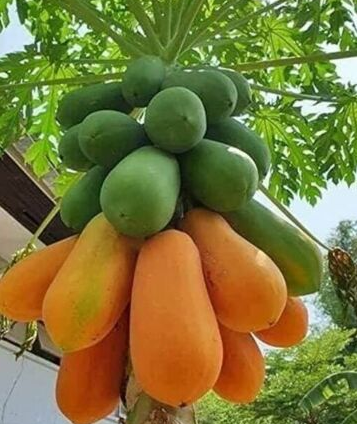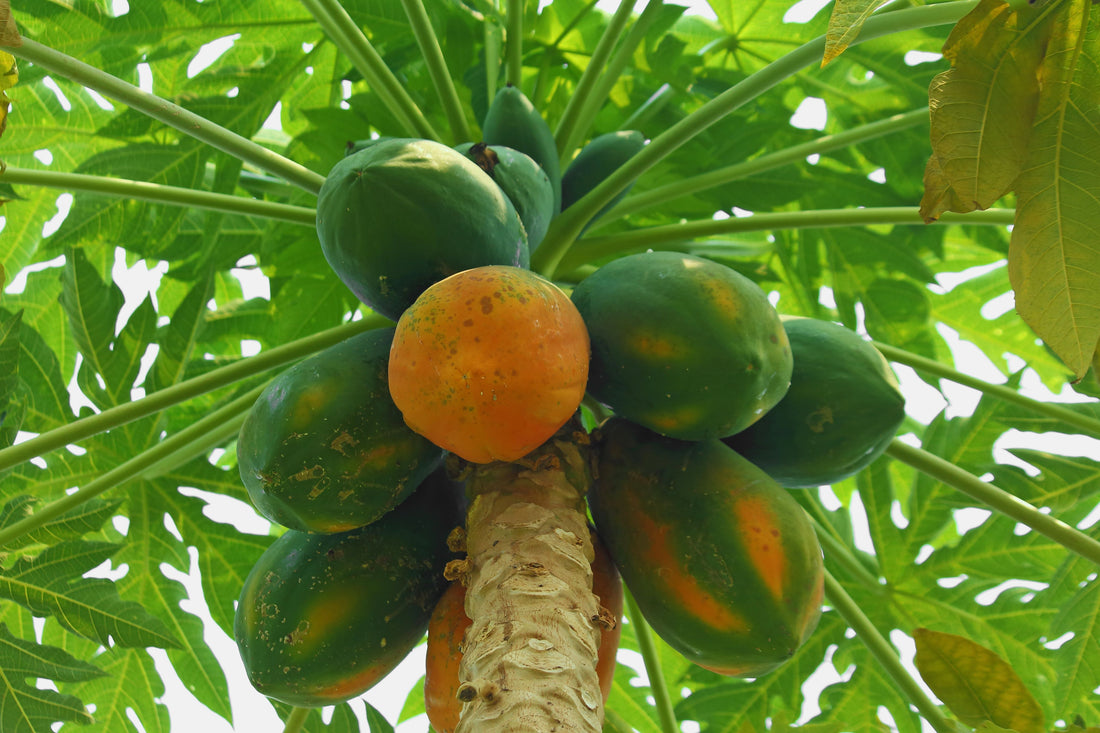1 product
-
Papaya Red Lady Carica Pawpaw Fruit Tree

 Papaya Red Lady Carica Pawpaw Fruit TreeFruit Trees
Papaya Red Lady Carica Pawpaw Fruit TreeFruit Trees- Regular price
-
From
$39.99 - Regular price
-
$49.99 - Sale price
-
From
$39.99
The papaya fruit tree, scientifically known as Carica papaya, is a tropical fruit tree that is prized for its delicious and nutrient-rich papaya fruits. Here are some key facts about papaya trees:
Origin and Distribution: Papaya trees are believed to have originated in the tropical regions of Central America and Mexico. They are now cultivated in many tropical and subtropical areas around the world, including parts of Asia, Africa, the Caribbean, and South America.
Appearance: Papaya trees have a palm-like appearance and are characterized by their single, unbranched trunk. They can reach heights of 10 to 30 feet (3 to 9 meters), depending on the variety and growing conditions. The leaves are large, deeply lobed, and arranged in a spiral pattern.
Fruit: Papayas are large, elongated fruits with a smooth, thin skin that can vary in color from green to yellow or orange, depending on the ripeness. The flesh is juicy and typically ranges in color from bright orange to pinkish-red, depending on the variety. Papaya fruits have a sweet and tropical flavor.
Varieties: There are several varieties of papaya, each with its own unique characteristics. Some common varieties include Solo, Red Lady, Maradol, and Hawaiian. The size, shape, and flavor of the fruits can differ between varieties.
Cultivation: Papaya trees thrive in warm climates and require well-draining soil. They prefer full sun exposure but can tolerate some shade. Papayas are usually propagated through seeds or stem cuttings. They are fast-growing trees and can start producing fruit within a year or two.
Uses: Papaya fruits are enjoyed fresh and are commonly eaten on their own or used in various culinary preparations. They can be added to fruit salads, smoothies, juices, or used as a topping for desserts. The unripe green papayas can be used in savory dishes, such as salads or curries.
Fruit Benefits: Papaya fruits are not only delicious but also packed with nutrients. They are an excellent source of vitamin C and contain significant amounts of vitamins A, E, and folate. Papayas are also rich in dietary fiber and contain enzymes that aid digestion.
Papaya trees are a beautiful addition to tropical gardens and provide a bountiful harvest of sweet and nutritious fruits. Whether enjoyed fresh or used in culinary creations, papayas are a tropical delight.




